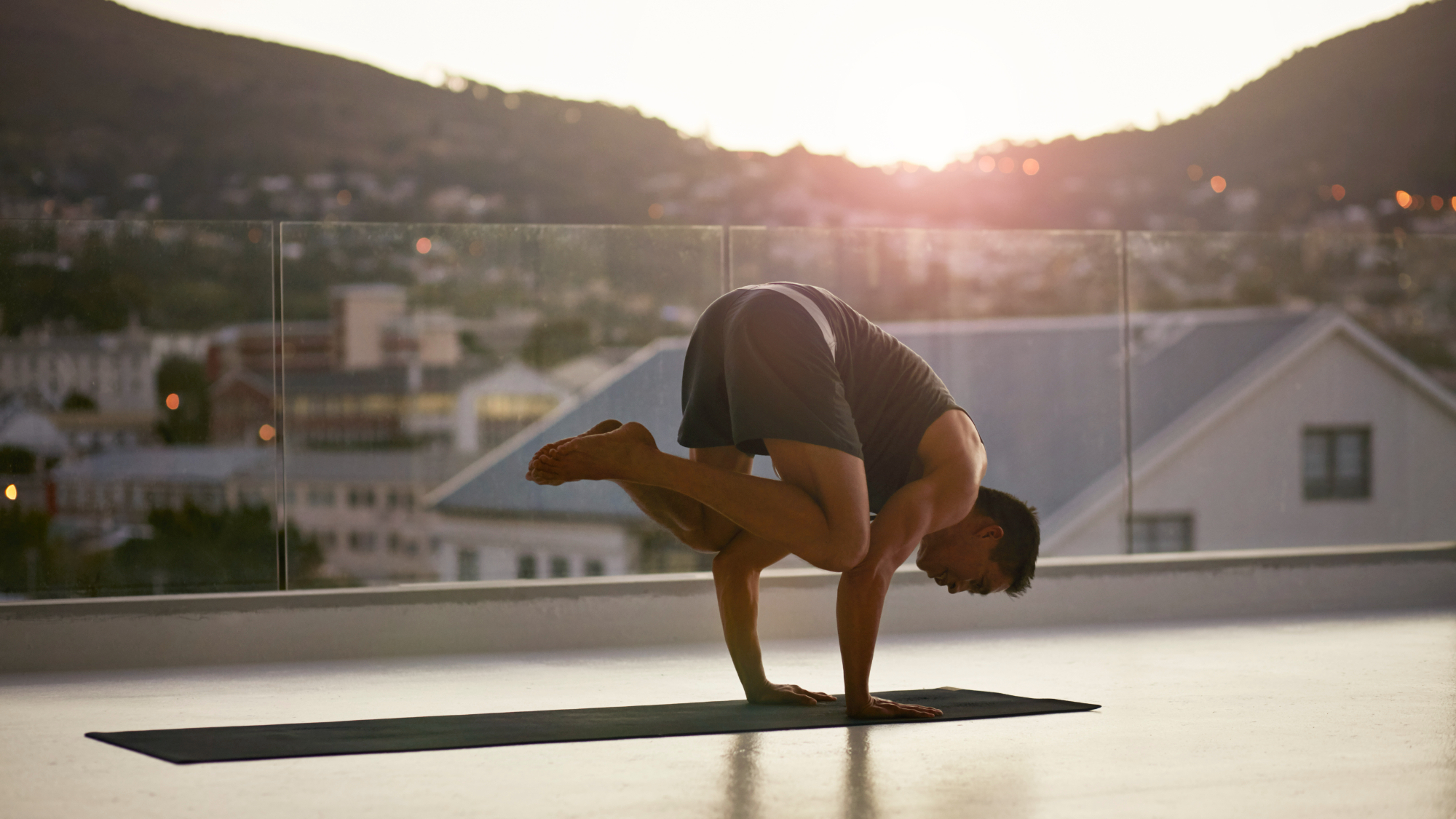CrossFit vs. Calisthenics: which is better for muscle building?
Which training method comes out on top in the CrossFit vs. Calisthenics showdown


If you're looking for a fun new way to train, you may have already encountered the CrossFit vs. calisthenics debate. Which method is better for building muscle? How effective are they when losing weight? What other health benefits can they offer? These are all common questions used to compare the two, so we decided it was time to get some answers.
First, it's important to say that both options are great forms of exercise, capable of supporting hypertrophy and fat loss while challenging your body to learn new skills and perform at its best. So, whether you reach for a pair of the best cross training shoes or make a beeline for a pull-up bar, it's likely an effective and enjoyable workout ahead of you.
But now, to business. Which discipline comes out on top in a good old-fashioned face-off? To settle this debate and help you decide how you want to train, Fit&Well spoke to Gus Vaz Tostes, Head of Training at Wit Fitness, and CrossFit athlete Zack George, who, in 2020, earned the title of the UK's Fittest Man.
We also considered what the science says, looking at relevant studies into each discipline. So, scroll on to find out which one takes the pole position when you compare CrossFit vs. calisthenics.

Gus is the head of training and coach at the London CrossFit gym, WIT, where he brings his 15 years of experience in health and fitness to members. After playing soccer for most of his teenage years, Gus went on to study for a Sports Science degree at university. There, Gus understood fitness' positive impact on people's lives.
Since then, he has been committed to helping people change their lifestyles through fitness. Playing sports, competing at CrossFit, and working with people with different levels and goals have made him eager to keep learning and helping people achieve all their goals.
CrossFit vs calisthenics: what are the training methods?
Whether you're looking into CrossFit for beginners or a CrossFitter considering calisthenics, it's important to define precisely what these two training methods actually are.
"CrossFit is simply described as constantly varied, functional movements performed at a relatively high intensity," Vaz Tostes says. "It is a training methodology that mixes weightlifting (barbell, dumbbell, and kettlebell exercises), gymnastics, and cardio."
On the other hand, Vaz Tostes says he likes to describe calisthenics as something close to street gymnastics. "It is very similar to Olympic gymnastics, through its inclusion of pulling, pushing, and handstand sequences are very commonly seen in the Olympics.
Start your week with achievable workout ideas, health tips and wellbeing advice in your inbox.
"It originated in parks; however, it has now moved to gyms and group classes. It is a very accessible training methodology as you only use your body weight. But, if possible, you'd need access to a pull-up bar and some parallettes."

CrossFit vs calisthenics: muscle building
Both CrossFit and calisthenics are capable of helping you build lean muscle as they place your muscles under mechanical tension—one of the prerequisites of gaining strength, according to a review published in the International Journal of Environmental Research and Public Health.
In simple terms, mechanical tension is any force that stretches your muscles, like lifting weights or performing a push-up. "Both practices are effective at building muscle," says CrossFit athlete Zack George. "However, with CrossFit's great variety of movements and strength-based exercises, you can achieve more as you have access to heavier weights."
He admits that the control needed to master many calisthenics moves will require plenty of core and upper body strength but adds that the use of weights in CrossFit allows exercisers to take advantage of the progressive overload principle.
This technique says that once an exercise becomes easy at a certain weight, you can increase the load and challenge your muscles to adapt to this heavier stimulus.

Zack George is a professional CrossFit athlete who owns CrossFit BFG in Leicester, UK. He got into fitness early, becoming a personal trainer at just 16, and was named the UK's Fittest Man in 2020.
As a physically bigger athlete for CrossFit, Zack's biggest struggle was the gymnastic movements, so he turned to calisthenics training to help raise his game in this area.
CrossFit vs calisthenics: weight loss
Our experts were united in their answers to this question too. "CrossFit is best [for weight loss]," Vaz Tostes says. "The cardio portion of CrossFit contributes to weight loss due to the amount of calories you burn, whereas calisthenics doesn't have this."
A study published in the Annals of Nutrition and Metabolism journal found that learning how to create a calorie deficit, where you burn more calories than you consume during a day, is necessary to lose weight. The intense nature of CrossFit is likely to burn more calories per session, helping you achieve a calorie deficit.
However, there is another crucial factor that is even more important to consider if weight loss is your goal. "In order to lose weight, the main principle is you must be in a caloric deficit, so the main factor to be considered is your diet," says George.
"CrossFit includes conditioning and workouts performed at a high intensity, which raises your metabolic rate and therefore increases your energy expenditure; it is the more effective of the two (for losing weight)—but only if your diet is right."
CrossFit vs calisthenics: cost
Calisthenics is the runaway winner when it comes to cost. It centers around bodyweight exercises, so you don't need equipment—just some floor space—and you're good to go. You can add equipment like a pull-up bar if you want to execute exercises such as inverted rows or muscle-up, but these are optional.
On the other hand, joining a CrossFit box (the term CrossFitters use to describe their gyms) requires a monthly membership fee. This will grant you access to classes, coaching, and specialist equipment like barbells, sleds, and medicine balls.
"You can, of course, train CrossFit by yourself," says George. "But as there are a lot of complex and high skill movements, it is strongly advised you attend classes or have a personal trainer who teaches you how to perform everything to prevent injury."

CrossFit vs calisthenics: benefits
A 2019 review article published in Sports Sciences for Health found that CrossFit training can improve cardiovascular endurance, stamina, strength, flexibility, power, and balance, making it an excellent option for boosting your all-around fitness.
George says it has the capacity to work every muscle in your body, and many participants become hooked thanks to the community element of a class workout.
Meanwhile, calisthenics offers the enticing opportunity to master your body weight with a minimal impact on your bank balance. This was the finding of a 2017 study published in the Isokinetics and Exercise Science Journal.
"Calisthenics training is a feasible and effective training solution to improve posture, strength and body composition (increasing muscle mass and decreasing body fat) without the use of any major training equipment," the researchers concluded.
CrossFit vs calisthenics: downsides
CrossFit is sometimes associated with higher injury rates due to the more intense nature of its workouts and the inclusion of technical movements like the snatch and muscle-up.
However, when we explored whether CrossFit is bad for you, we found you could mitigate this risk if you use scaled versions of the movements suitable for your ability level and have access to quality coaching.
A downside of Calisthenics is that it is limited by the resistance you can create with your body. "Although calisthenics can help you build a good base by controlling your own body weight, once your body gets used to that weight, you won't be able to build much more strength unless you get heavier," says Vaz Tostes.
There are, however, a wide range of increasingly tricky calisthenics movements you can learn to keep challenging your body. For example, progressing from the pull-up to the muscle-up or the push-up to the handstand push-up.

CrossFit vs calisthenics: verdict
When it comes to CrossFit vs calisthenics, both offer a host of benefits and have the ability to help you get in great shape. Our experts said that CrossFit pipped calisthenics to the post regarding muscle-building and fat loss, but calisthenics offers a more accessible and affordable training option.
"If you don't like going to the gym, aren't interested in lifting weights or cardio, and prefer working out at home, then calisthenics is probably for you," says George. After all, learning how to do a handstand isn't something you need a fitness center or equipment for.
"...CrossFit, on the other hand, provides a lot more variety and a broader range of fitness, including mastering your own bodyweight—like calisthenics—as well as weightlifting and metabolic conditioning."
"Aerobically, it is much better for you as it incorporates cardio, whereas calisthenics does not. You can train calisthenics with other people, but CrossFit is more specifically known for training in classes and has more of a community element which is a big reason as to why it is so popular."
Vaz Tostes agrees. "Calisthenics is for those who like learning new tricks and have little or no access to a gym while building a lot of strength," he says. "But if you want to challenge your body in all areas of fitness, building strength, your VO2 max, conditioning, and becoming more skillful, CrossFit is the best form of training for you. "

Harry Bullmore is a Fitness Writer for Fit&Well and its sister site Coach, covering accessible home workouts, strength training session, and yoga routines. He joined the team from Hearst, where he reviewed products for Men's Health, Women's Health, and Runner's World. He is passionate about the physical and mental benefits of exercise, and splits his time between weightlifting, CrossFit, and gymnastics, which he does to build strength, boost his wellbeing, and have fun.
Harry is a NCTJ-qualified journalist, and has written for Vice, Learning Disability Today, and The Argus, where he was a crime, politics, and sports reporter for several UK regional and national newspapers.